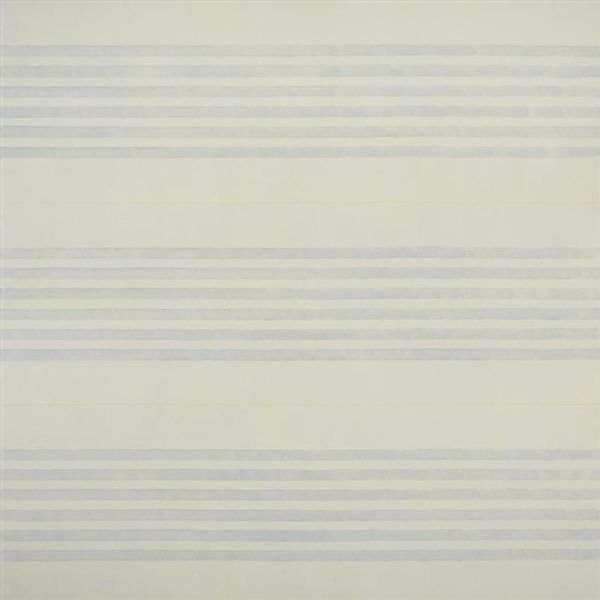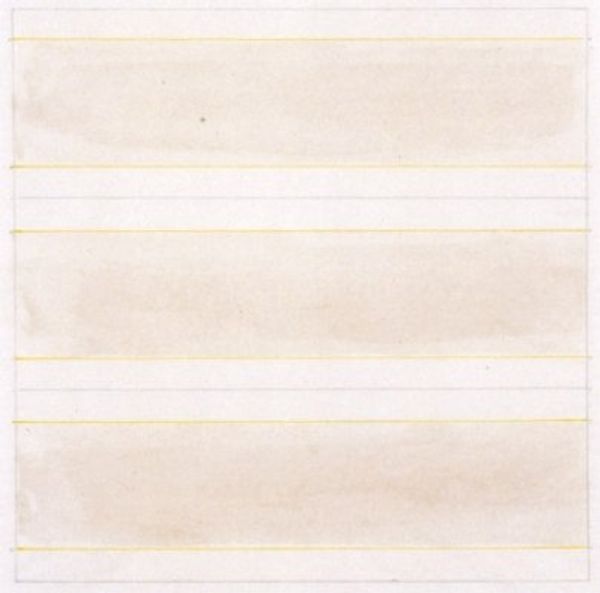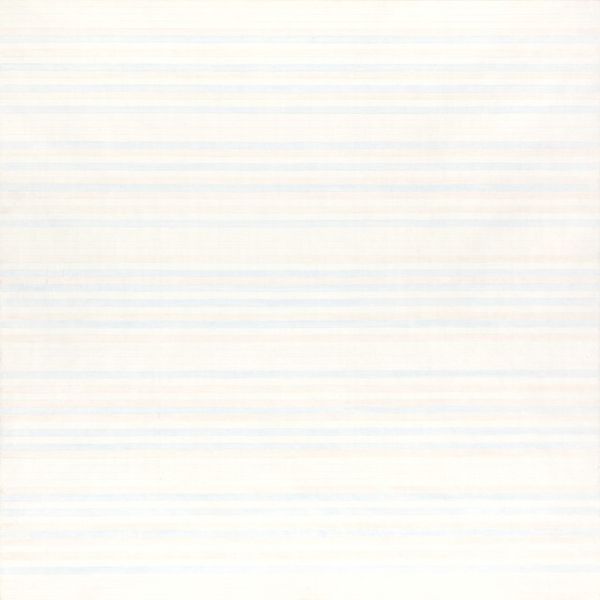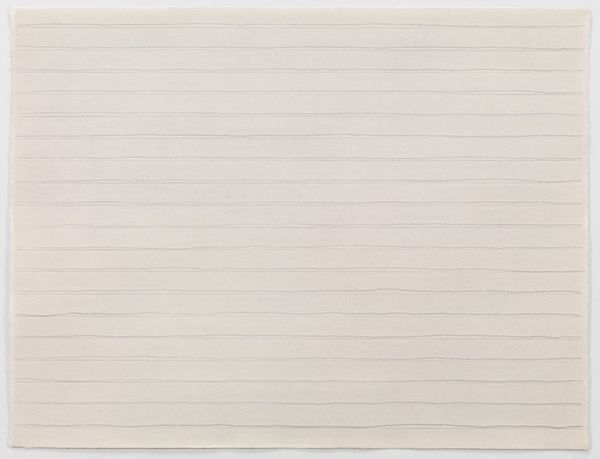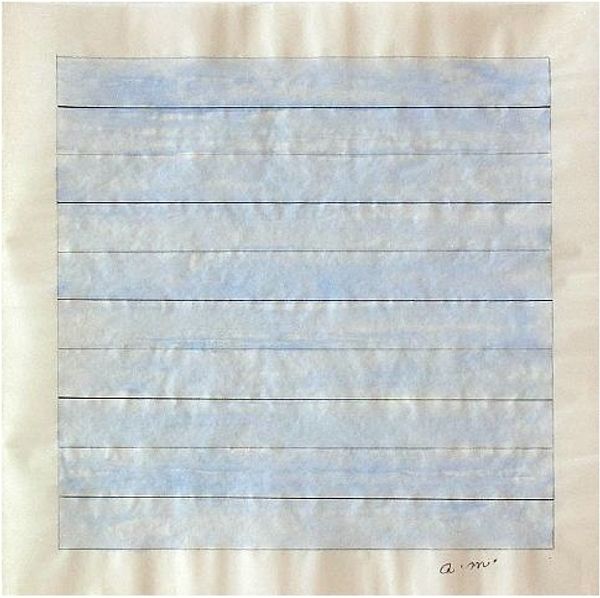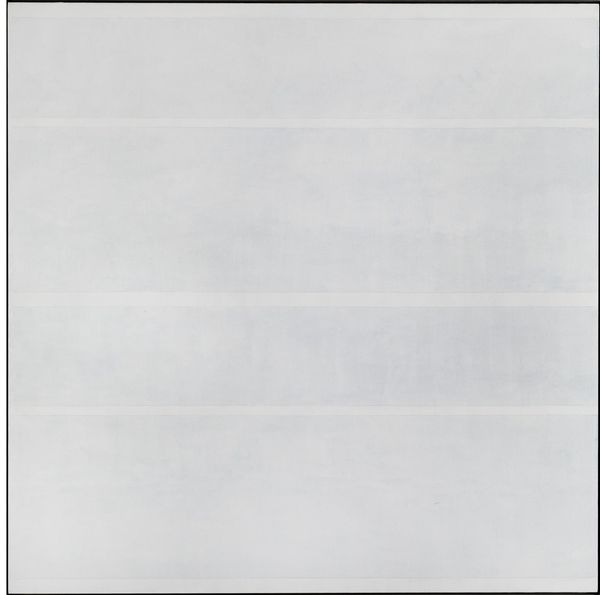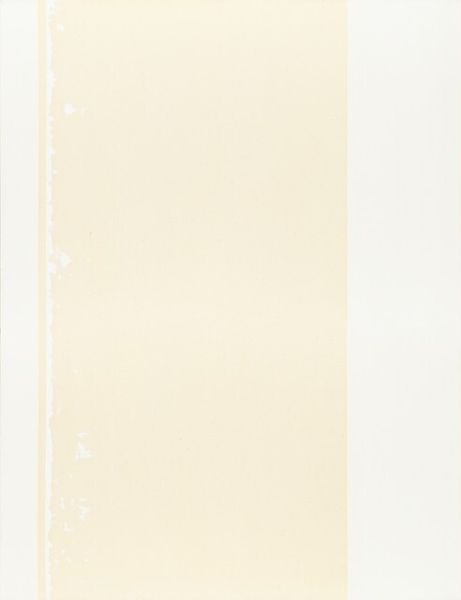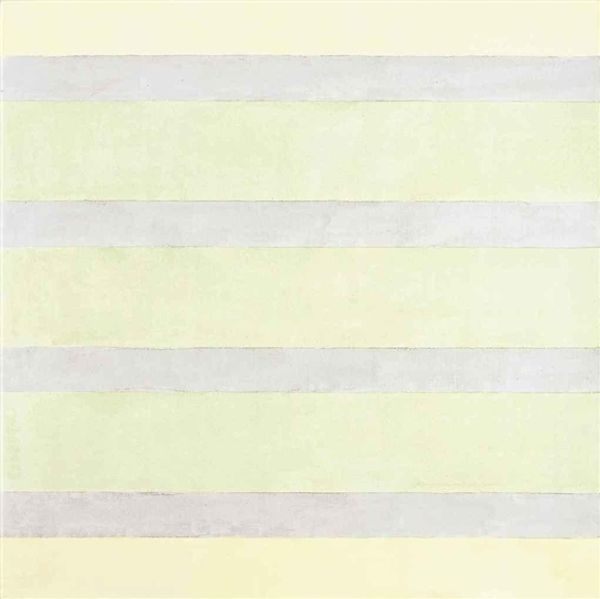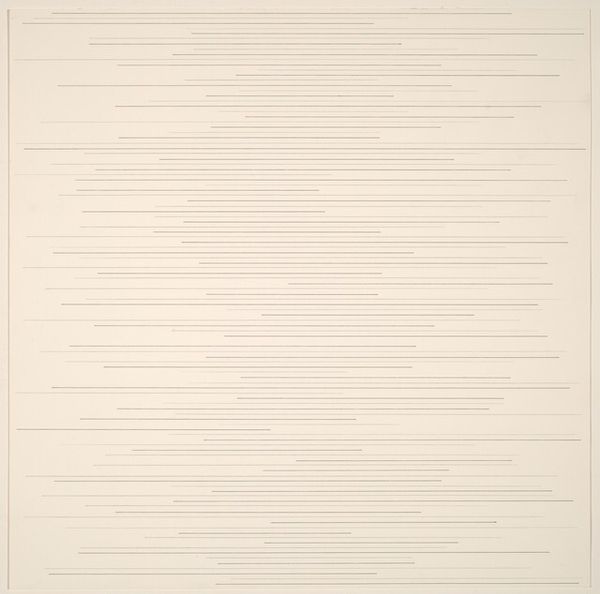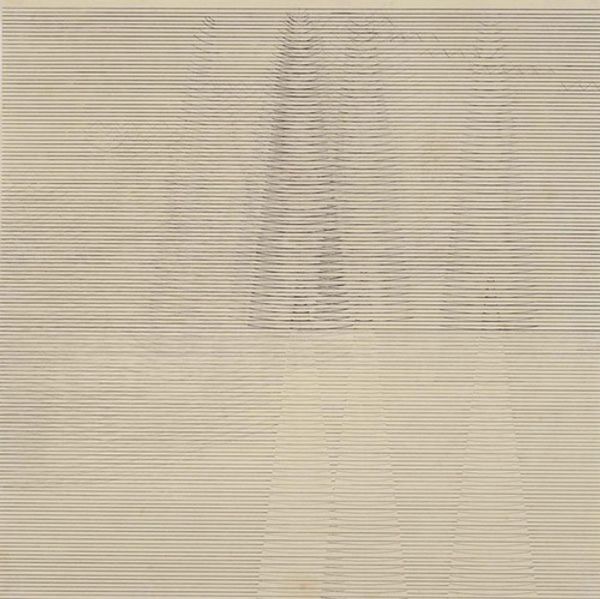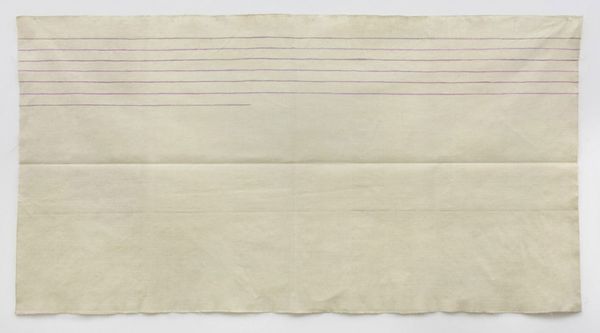
Copyright: Agnes Martin,Fair Use
Curator: This is an untitled work by Agnes Martin, created in 1977. She’s often associated with the minimalist movement. Editor: It feels so ethereal, almost like looking at a faded memory. The subtle horizontal lines...they give it this feeling of quiet contemplation, don't they? Curator: Indeed. Martin’s work has been interpreted in numerous ways, and it sits very interestingly between formalism, which prizes pure aesthetic form, and an almost transcendental emotional expression. These paintings certainly elicit strong responses. How might its reception connect to broader aesthetic shifts in the '70s, towards more intimate, less monumental forms of expression? Editor: Well, there was definitely a move against the grand narratives of earlier art movements. Think about the rise of feminism and other identity-based movements at the time. But this wasn't aggressively political art either, was it? Its beauty exists more on a plane of gentle and considered reaction, doesn’t it? Perhaps there’s some deep meaning there too. The lines evoke associations with a musical score, for me. How does this work act as a cultural signifier, embodying tranquility within, a sort of aesthetic resistance to dominant forces in society at the time? Curator: That resonates. These bands of color – primarily blues and yellows in extremely subtle tints - are like delicate horizon lines, reminiscent of landscapes, though Martin rarely discussed landscapes directly. What does the symbolism of color represent, the ethereal blending? Does the regularity and the repetition reinforce any meaning through pattern or create some more intrinsic experience? Editor: I wonder if part of its impact is precisely this resistance to being pinned down. It’s like a visual mantra, demanding patience and presence. And yes, thinking about its placement, or the context it was shown in…a big city gallery versus a quieter space – must affect the overall experience quite considerably. I imagine it demands its own space for consideration. Curator: It invites a kind of contemplative stillness, offering a counterpoint to the noise and demands of contemporary life. Martin offered it as a space to consider something quite essential and fundamental to being human. Editor: And that’s why, even now, these deceptively simple lines can still evoke such profound feelings of peace, longing, and a connection to something beyond ourselves. Thank you.
Comments
No comments
Be the first to comment and join the conversation on the ultimate creative platform.
